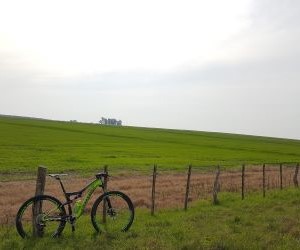Learn how to choose between clipless and flat pedals by comparing efficiency, control, comfort, and riding style to find the right setup for your needs.
WHICH INDICATORS HELP SPOT BREAKAWAY WINNERS FOR GIRO D’ITALIA MEDIUM-MOUNTAIN STAGES?
Medium-mountain stages in the Giro d’Italia are often decisive for opportunistic riders. Spotting potential breakaway winners requires analyzing rider characteristics, race dynamics, and stage profiles to predict success.

The role of breakaways in medium-mountain stages
Breakaways frequently define medium-mountain stages, offering riders outside the general classification a chance for stage wins. Understanding why and when a breakaway forms is critical for identifying potential victors.
Stage characteristics
Medium-mountain stages often feature rolling hills, short climbs, and varying gradients. These features favor versatile riders with both climbing and tactical capabilities. Breakaways can form early, but successful riders must sustain pace and navigate tactical shifts.
Race dynamics
Peloton behavior, team strategies, and GC (general classification) interests heavily influence breakaway success. Teams without GC threats are more likely to allow a breakaway to escape, while teams controlling the stage may chase selectively.
Medium-mountain stages have rolling hills and short climbs
Breakaways give non-GC riders stage-winning opportunities
Peloton strategy affects success rates
Rider versatility and endurance are critical
Identifying likely breakaway candidates
Certain rider traits indicate higher chances of breakaway success. Physical capacity, tactical intelligence, and team role all factor into predicting who may prevail in medium-mountain stages.
Climbing and endurance ability
Riders capable of handling repeated short climbs and sustaining high power outputs over rolling terrain are prime breakaway candidates. A strong balance between climbing and time-trialing skills improves finishing chances.
Experience and race intelligence
Veteran riders often know when to attack, conserve energy, and position themselves optimally. Knowledge of Giro d’Italia routes and common peloton behaviors aids in tactical decision-making during breakaways.
Team support and motivation
Riders from teams without GC ambitions or with stage-focused goals are more likely to receive freedom in the breakaway. Motivation to win a stage, gain points, or showcase sponsors influences risk-taking in medium-mountain terrain.
Strong climbers with rolling terrain endurance
Experienced, tactical riders
Riders with stage-specific team freedom
Motivated for points, exposure, or opportunistic wins
Reading the medium-mountain stage profile
Stage profiles provide clues on when breakaways can succeed. Understanding climb positions, gradient changes, and technical descents helps predict whether a breakaway can survive to the finish.
Climb length and gradient
Medium-length climbs with moderate gradients favor punchy riders who can repeatedly accelerate. Long, steep climbs usually favor pure climbers and may discourage early breakaway attempts.
Flat sections and descents
Flat sections provide recovery opportunities and drafting benefits. Technical descents test bike-handling skills, where confident descenders can increase gaps and control pace, crucial for breakaway success.
Analyze climb length and gradient
Identify flat recovery sections
Assess technical descents for advantage
Predict where breakaways are likely to form
YOU MAY ALSO BE INTERESTED






